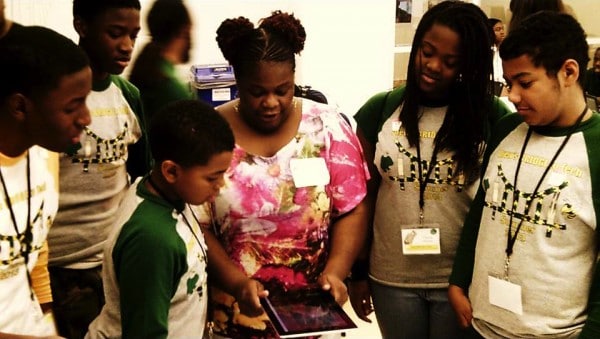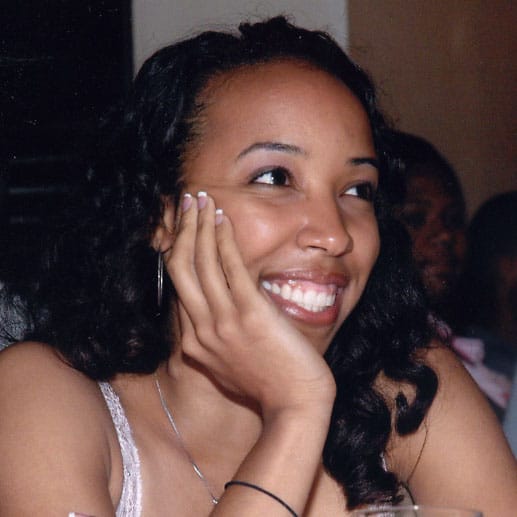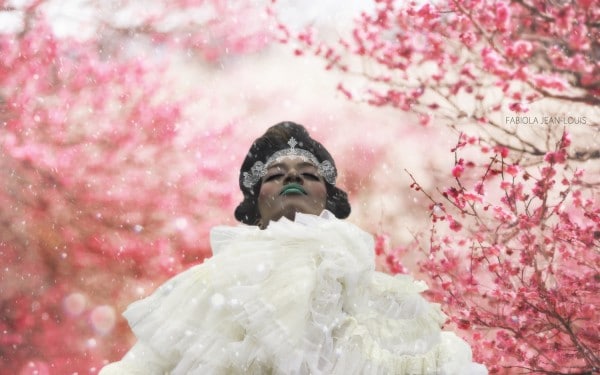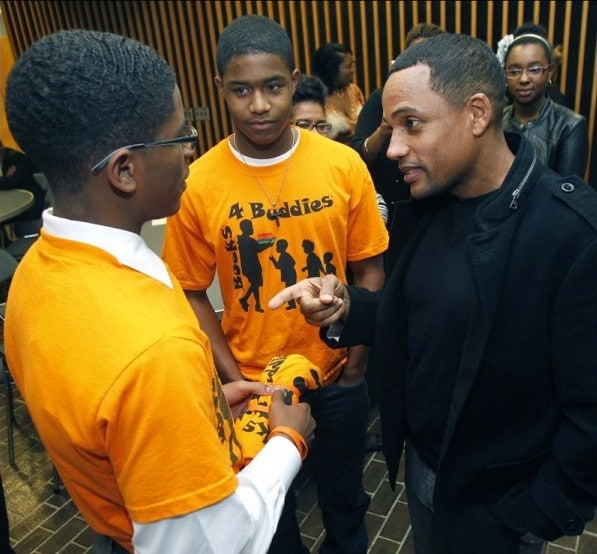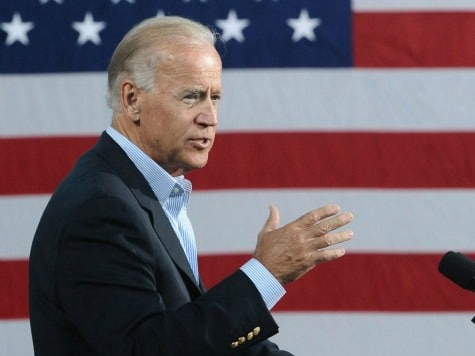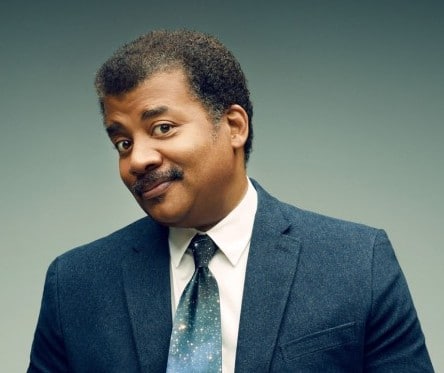You may have heard of STEM (Science, Technology, Engineering and Math) subjects, but more and more programs are beginning to focus on STEAM (STEM + Art), recognizing the importance of art and design in education, research and policy. Dr. Nettrice Gaskins, STEAM education lab director at Boston Arts Academy, investigates culturally situated arts-based learning and new media and how they are developed and practiced in creative communities. In addition to her extensive work in the STEAM field, she frequently writes about and advances theory and research on Black futurism, digital technologies, art and music. In this interview, Gaskins offers her thoughts on Afrofuturism, race, technology, art and where it all intersects out in the real world.
How do you define technology? Where do art and technology cross paths?
Technology comes from a Greek word (teche) that translates as art, skill, cunning of hand and another word (logia) that means I speak. This makes me think of Public Enemy’s Terminator X Speaks With His Hands, or Sun Ra’s use of different instruments such as early electronic keyboards. Art and music, in of themselves, are products, but you need a tool, system or platform with which to extrapolate, communicate and amplify that information. That’s how an art form becomes technology. Technology is the making, modification, usage and knowledge of tools, systems or platforms to solve problems or improve a pre-existing solution to a problem. Take, for example, the problem of race: Ta-Nehisi Coates writes about race as a social construct and Beth Coleman writes about race as technology. Both are correct; we have constructed tools, systems and platforms to characterize race. I explored the idea of “race as technology” in my Art21 post, Black Futurism: The Creative Destruction and Reconstruction of Race in Contemporary Art, specifically how African-American artists trouble the notion of race.
One criticism about Afrofuturism is that it does not advance technology or dream up novel technologies that can have practical, real-life applications. What are your thoughts on this critique?
One of the early scholars of Afrofuturism, Alondra Nelson, co-wrote Technicolor: Race, Technology, and Everyday Life. In the book, she asserts that it is necessary to use a broader understanding of technology, and to include not only those thought to create revolutions (e.g. information technologies), but also those with which people come in contact in their daily lives.
To address Nelson’s challenge, my research more fully realizes the “different levels of technical knowledge and innovation that individuals and communities bring to their world, play, and creative expression.” This includes studying Sun Ra, as well as contemporary artists who tinker with found materials to create something new. One example of this is Grandmaster Flash who has been credited with the invention of the first crossfader by sourcing parts from a junkyard in the Bronx. This is a real-life application that helped bring hip-hop to the rest of the world. Of course, there are smaller revolutions taking place in artists’ studios. The problem is that we generally do not hear about these inventions. Grandmaster Flash’s role as an inventor was nearly lost to history. Cultural institutions such as the Smithsonian have ensured his place in history, as well as George Clinton’s mothership that was recently acquired and rebuilt for permanent exhibition there.
How do we nurture and sustain these developments, particularly with our youth? In what ways is culturally situated arts-based learning accessible to poor and marginalized communities?
In order to sustain these developments, we have to create and sustain formal and informal learning environments where young people or even adults can tinker, experiment and play with technology. This is especially true for people who have been historically marginalized in science, technology, engineering and math (STEM). The artist’s and sound engineer’s studios are places where this happens, but with continuous, deep cuts in arts programs and that lack of new media in the schools, it makes access to these learning spaces difficult or impossible.
How does Afrofuturism/Black futurism inform your research and real-life work in the fields of art and technology? What experiences or inspirations led you to focus on and develop STEAM and culturally situated arts-based learning? Five to 10 years into the future, what role, impact and application do you see your work having?
When I was in high school, I double-majored in visual art and college/university, which meant that I was learning the craft and science of making ceramics (for example) while creating computer-generated anatomy illustrations in the same art classroom. I painted a mural demonstrating parabolic functions on my math teacher’s wall. Speaking of parabolas, check out the work of Fred Eversley: to me his work belongs in Afrofuturism. Eversley originally worked in the engineering and aerospace industry before deciding to become an artist. He also invented a technique of centrifugal casting of multi-color, multi-layer, concentric ring sculptures made of plastics.
However, unlike Eversley and other artists who prefer abstraction to dealing with race, I explored cultural heritage and hip-hop at a young age. I was doing independent research that led me to link the now old-school bamboo-style door knocker earrings with gold earrings worn by Ghanaian women. I created computer art illustrating these links when I was in the 12th grade. That piece was part of a series that got first place in Pratt Institute’s National Talent Search. That’s how I got to Pratt from a small town in Kentucky.
That’s what it’s really about, not just STEAM and culturally situated arts-based learning but advancing new approaches to the development of these models and providing multiple paths to success in school and the 21st century workforce. This year I conducted workshops with 150 middle school students who were predominantly African-American and these young people were inventing with paper and culturally situated design tools, including Afrofuturism CSDTs developed at Rensselaer Polytechnic Institute (RPI). These tools are online and free to use but it’s going to take a system to broaden access to and engagement in STEM.
My next challenge is building a new STEAM lab at Boston Arts Academy. The launch of the lab will take place in early fall. During the final interview for the position, I presented math and music curriculum using John Coltrane’s Giant Steps. This song and album is still considered innovative. Coltrane and Sun Ra were contemporaries and, apparently, studied together.
You can find more of Dr. Gaskins’ work at http://nettrice.us
Rasheedah Phillips is a Philadelphia public interest attorney, speculative fiction writer, the creator of The AfroFuturist Affair, and a founding member of Metropolarity.net. She recently independently published her first speculative fiction collection, “Recurrence Plot (and Other Time Travel Tales).”




